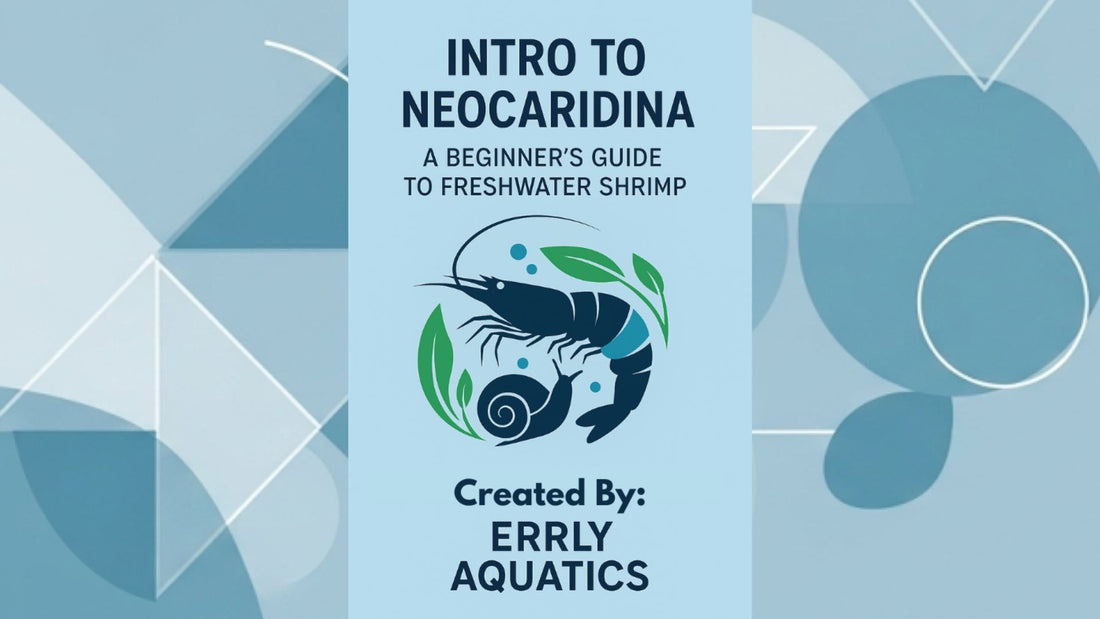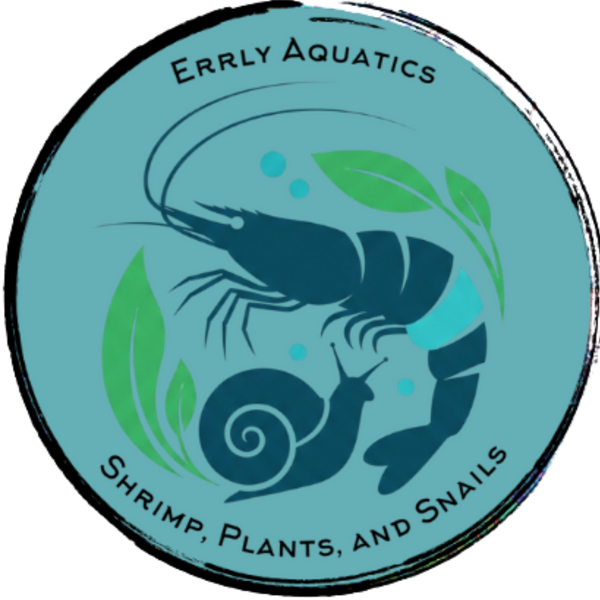
Intro to Neocaridina Shrimp
Share
A quick-start care guide for beginners from Errly Aquatics. For a more detailed guide with images, please Download The Intro To Neocaridina PDF.
Caridina vs. Neocaridina: What’s the Difference?
Neocaridina are hardier, more adaptable, and ideal for beginners. They come in many vibrant colors and tolerate a wider range of parameters.
Caridina often require more specific water conditions and experience (e.g., Crystal Reds/Bee shrimp). If you want to keep Caridina, use a dedicated guide and target their stricter parameters.
This article focuses on Neocaridina care.
The Importance of a Properly Cycled Tank
“Cycling” establishes beneficial bacteria that convert toxic ammonia to nitrite and then to the less harmful nitrate. Without a cycle, ammonia/nitrite spikes can quickly stress or kill shrimp.
Tip: If you need step-by-step cycling instructions, follow a dedicated cycling guide before adding shrimp.
Ideal Water Parameters for Neocaridina
| Parameter | Target Range |
|---|---|
| Temperature | 74–80°F |
| pH | 7.0–8.0 |
| GH (General Hardness) | 6–10 dGH |
| KH (Carbonate Hardness) | 4–6 dKH |
| Ammonia | 0 ppm (undetectable) |
| Nitrite | 0 ppm (undetectable) |
| Nitrate | < 20 ppm |
Stability beats perfection. Keep parameters steady and avoid rapid swings.
- Use a shrimp-safe sponge filter for gentle flow and biofilm surface area.
- Plant heavily to improve biological balance and natural nitrate uptake.
- Top off evaporated water with RODI only.
Feeding Neocaridina: Essentials
Neocaridina are constant grazers and will pick at biofilm, algae, and detritus.
- Base diet: quality shrimp pellets, algae wafers, or shrimp-specific flakes.
- Treats: blanched zucchini, spinach, cucumber; occasional protein (brine shrimp, bloodworm).
- Avoid overfeeding. Offer small portions once daily or every other day; remove leftovers after a few hours.
“We fast our shrimp a couple of days a week to help reduce bio-waste. It’s helped me raise stronger, healthier shrimp.” — Dallas Davis
Understanding Neocaridina Genetics: Color, Breeding Lines & Stability
Each color morph is a distinct “line.” Mixing colors often yields wild-type (brown/clear) offspring over time due to recessive traits.
- Keep one color line per tank to preserve color quality.
- Selectively breed your best specimens to strengthen the line.
- Expect occasional off-color individuals; many keep a “cull tank.”
“I keep a ‘cull tank’ that still looks beautiful. Even throwbacks and low‑grade shrimp deserve a good tank.” — Dallas Davis
Breeding Neocaridina: Simple, Natural, Rewarding
With stable conditions and food, Neocaridina breed consistently.
- Watch for the female’s saddle (pre‑egg cluster). After molting, she mates and becomes berried (eggs under the tail).
- Incubation: ~3–4 weeks; hatchlings are miniature versions of adults.
- Provide moss, botanicals, and sponge filters for hiding and biofilm.
- Avoid predators; many fish will eat shrimplets.
Water Changes & Stability
Frequent water changes can stress shrimp by swinging parameters.
- In stable, fully cycled tanks, routine water changes are often unnecessary.
- Top off evaporation with RODI weekly.
- If nitrate exceeds ~20 ppm, perform a small (10–15%) matched-parameter change and drip acclimate if possible.
Tips & FAQs
Quick Tips
- Less is more: avoid overfeeding.
- Use shrimp-safe sponge filtration.
- Skip fish until the colony is established.
- Add leaf litter/botanicals to promote biofilm.
- Be patient; stability takes time.
FAQs
Can I mix different colors?
Yes, but expect wild-type offspring over time. Keep one color per tank to preserve color.
Do I need a heater?
Not always. Room temps 68–74°F can work, but a heater adds stability if your room fluctuates.
How many should I start with?
10–20 shrimp is a healthy starting group for a stable colony.
How long do they live?
Typically 1.5–2 years with good care.
Glossary
Berried Biofilm Cycle TDS GH KH pH Molting Cull Saddle Wild-Type RO/RODI
See definitions at the end of your PDF or keepers’ guides if you need a refresher.
Tank Setup Checklist
- Fully cycled aquarium (4+ weeks stable)
- Shrimp-safe sponge filter
- Heater (if room temperature fluctuates)
- Live plants and/or moss
- Botanicals (e.g., Indian almond leaves, alder cones)
- RODI top-off plan
- Test kits for ammonia, nitrite, nitrate; GH/KH
- Quality shrimp food and occasional treats
- Hiding spots for shrimplets
Quick Troubleshooting
Shrimp Dying Suddenly
Check ammonia/nitrite, temperature, and copper contaminants in water or additives.
Shrimp Not Molting
Raise GH (minerals), ensure hides, and avoid big parameter swings.
Shrimp Not Breeding
Give it time, maintain stability, add hides, verify you have both sexes.
Faded Colors
Reduce stress, improve diet, and keep parameters steady.
Planaria/Pest Worms
Usually overfeeding; reduce feed and clean substrate. Consider shrimp-safe treatments if needed.
Buy Your Shrimp from Errly Aquatics
High‑quality, home‑raised Neocaridina bred for color, health, and hardiness.
Orange eye Neocaridina • Red/Blue/Orange lines • Plants & snails • Local & nationwide shipping • Friendly advice
TikTok: @errlyaquatics • Email: bdallasd@gmail.com
© 2025 Errly Aquatics — Neocaridina care guide.
